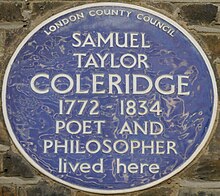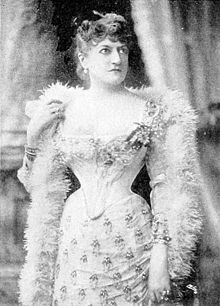This is the script of a talk I gave to the Oscar Wilde Society on a visit to Smallhythe Place, once home to Ellen Terry, in September 2016. Do join the society. Such warm and wonderful people keeping the memory of Wilde alive!
Although he would surely have been aware of an actress with a reputation as stellar as Ellen Terry’s, it’s believed that the first time Oscar Wilde saw her perform was when he went with David Hunter Blair, a friend from Oxford University, to see her in Tom Taylor’s comedy New Men and Old Acres at the Court Theatre, London in December 1878. Fellow Irish playwright, George Bernard Shaw, fell in love with Terry on the strength of her performance in that play.

Six months later, on 27 June 1879, Wilde watched Terry play Queen Henrietta Maria in Charles I by W. G. Wills at the Lyceum Theatre. He was 24 years old and had just come down from Oxford University with a double first. She was 8 years older at 32, had been married to and separated from artist G. F. Watts, and had two children with Edward Godwin, from whom she had recently split. In 1878, she had left the Court Theatre to become leading lady with Henry Irving’s company at the Lyceum Theatre.
Wilde was mesmerised by Terry’s performance and wrote a sonnet in her honour, as was his habit. He sent it to her along with a letter expressing his ‘loyal admiration’ for her talent. He declared:
‘No actress has ever affected me as you have. I do not think you will ever have a more sincere an impassioned admirer than I am’.
Three weeks later, his sonnet, now titled ‘Queen Henrietta Maria’ was published in society periodical The World. It began:
In the lone tent, waiting for victory,
She stands with eyes marred by the mists of pain,
Like some wan lily overdrenched with rain;
Terry was very taken with Wilde’s poetic tribute. In her autobiography The Story of my Life, she wrote:
‘That phrase ‘wan lily’ represented perfectly what I had tried to convey, not only in this part, but in Ophelia. I hope I thanked Oscar enough at the time. Now he is dead and I cannot thank him any more…I had so much bad poetry written to me that these lovely sonnets from a real poet should have given me the greater pleasure.’

When Terry appeared in The Merchant of Venice in 1879, Wilde wrote a new sonnet, ‘Portia’, as a tribute to her beauty:
‘For in that gorgeous dress of beaten gold,
Which is more golden than the golden sun,
No woman Veronese looked upon
Was half so fair as thou whom I behold.’
This ‘gorgeous dress of beaten gold’ is on display in Smallhythe Place.
Terry’s performance as Camma, Tennyson’s Priestess of Artemis in The Cup in January 1881, prompted Wilde to compose a third sonnet, ‘Camma’, in which he expressed a desire to see her play Shakespeare’s Cleopatra. She never did.

Wilde included all three of the sonnets he had written for Terry in his collection Poems, published by David Bogue in 1881 at Wilde’s own expense. Although it garnered a mixed critical response and many of the poems were considered derivative, it is worthy of perusal.
So was it simply Wilde’s admiration for Terry’s beauty and talent that prompted these tributes? Since he was a very ambitious young man, it seems certain that they were intended to foster a close association with one of the most famous women in London. Certainly, he would have loved to have persuaded Terry interpret his work.
In 1880, Wilde sent Terry a copy of his first play, Vera, beautifully bound in dark red leather with her name embossed in gold on the binding and inscribed ‘from her sincere admirer the author’. The letter that accompanied it contained the line:
‘Perhaps someday I shall be fortunate enough to write something worthy of your playing’.
Terry was flattered but turned Vera down.
Wilde and Terry moved in the same bohemian circles and had become friends by then. She was a regular visitor to 13 Salisbury Street, the home he shared with artist Frank Miles. Early in 1880, Terry persuaded Wilde to share her box at the Criterion Theatre to watch an adaptation of James Albery’s Where’s The Cat, a satire on Aestheticism, in which Wilde was apparently parodied by Herbert Beerbohm Tree. Little wonder he declared the play to be ‘poor’.
One incident that illustrates how close Wilde and Terry had become occurred when Terry was about to take to the stage in the Lyceum to play Camma in The Cup. Another member of the cast that night was Florence Balcombe, Wilde’s former girlfriend and now Mrs. Bram Stoker. Stoker husband was the business manager of the Lyceum and Irving’s right-hand man. The very beautiful Florence, who did not pursue an acting career, had a tiny part as a vestal virgin.
It seems that Wilde still harboured feelings for lovely Florence, since he sent two crowns of flowers to Terry, accompanied by this revealing note:
Will you accept one of them, whichever you think will suit you best. The other – don’t think me treacherous, Nellie – but the other please give to Florrie from yourself. I should like to think that she was wearing something of mine the first night she comes on the stage, that anything of mine should touch her. Of course if you think – but you won’t think she will suspect? How could she? She thinks I never loved her, thinks I forget. My God how could I!
The admiration between Wilde and Terry was mutual. He christened her ‘Our Lady of the Lyceum’ and called her ‘the kindest-hearted, sweetest, loveliest of women’. He also sent her a photograph inscribed ‘for dear wonderful Ellen’.
She declared of him:
‘The most remarkable men I have known were, without a doubt, Whistler and Oscar Wilde…there was something about both of them more instantaneously individual and audacious than it is possible to describe’.
When Terry embarked on her first tour of America with the Lyceum company in October 1883, she recalled seeing Wilde, accompanied by Lillie Langtry, standing on the quayside in Liverpool, waiting to see them off. She noticed that he held his hand to his mouth to hide his ‘ugly teeth’ but she remarked on his ‘beautiful eyes’. Wilde had toured America the previous year and Langtry had arrived for her first tour towards the end of his.
Terry’s encouragement of Langtry’s ambitions to become an actress, a path she had embarked on at Wilde’s suggestion, and her open admiration for her potential rival’s beauty, endeared her further to Wilde. When Langtry played Rosalind in As You Like It in 1882, Terry sent her a letter of encouragement, followed by a telegram.
Dear Nellie,
I bundled through my part somehow last night, a disgraceful performance, and no waist-padding! Oh what an impudent wretch you must think me to attempt such a part! I pinched my arm once or twice last night to see if it were really me. It was so sweet of you to write me such a nice letter, and then a telegram, too!
Yours ever, dear Nell
Lillie
This was a particularly unselfish act since Terry never got to play this coveted part.

Lillie Langtry as Rosalind
When Wilde was courting Constance Lloyd in 1883, he took her to see Othello at the Lyceum, with Terry as Desdemona. Afterwards, Constance became a regular at the theatre and frequently dined with Terry and Irving after shows. Another connection was established when Edward Godwin, Terry’s former partner and the father of her children, decorated the Wilde’s home in Tite Street in 1884.
Wilde loved Terry’s interpretations of Shakespeare’s women. His review of the Lyceum’s Hamlet for the Dramatic Review on 9 May 1885, was full of praise for her:
And of all the parts which Miss Terry has acted in her brilliant career, there is none in which her infinite powers of pathos and her imaginative and creative facility are more shown than in her Ophelia. Miss Terry is one of those rare artists who needs for her dramatic effect no elaborate dialogue, and for whom the simplest words are sufficient.
His review of The Lyceum’s production of an adaptation of Olivia by W.G. Wills, written for the Dramatic Review on 30 May 1885, included the observation that:
To whatever character Miss Terry plays she brings the infinite charm of her beauty and the marvellous grace of her movements and gestures. It is impossible to escape from the sweet tyranny of her personality. She dominates the audience by the secret of Cleopatra.
In that same review, having praised her interpretation of Olivia, he observed:
There was, I think, no one in the theatre who did not recognise that in Miss Terry our stage possesses a really great artist, who can thrill an audience without harrowing it, and by means that seem simple and easy can produce the finest dramatic effects.
In May 1888, Wilde sent a copy of The Happy Prince and Other Tales to Terry. In response, she wrote:
They are quite beautiful, dear Oscar, and I thank you for them from the best bit of my heart…I should like to read one of them someday to NICE people – or even NOT nice people, and MAKE ‘em nice.
Unfortunately, his plans for her to undertake a series of public readings never came to fruition.
In 1889, when Terry’s carriage passed the window of Wilde’s Tite Street home and he noticed that she was wearing her costume for Lady Macbeth, an emerald gown shimmering with the iridescent wings of a thousand jewel beetles, he remarked:
‘The street that on a wet and dreary morning has vouchsafed the vision of Lady Macbeth in full regalia magnificently seated in a four-wheeler can never again be as other streets: it must always be full of wonderful possibilities.’
He included an image of the finished painting as the frontispiece to the July 1889 issue of The Woman’s World, which he edited at the time.
Terry too loved the dress and wrote:
‘One of Mrs. Nettle’s greatest triumphs was my Lady Macbeth dress, which she carried out from Mrs Comyns Carr. I am glad to think it is immortalised in Sargent’s picture. From the first I knew that picture was going to be splendid.’
In 1892, Ellen’s sister Marion Terry played Mrs. Erlynne in the very first production of Lady Windermere’s Fan. Although the part was intended for Lillie Langtry, it was to be her most significant role.
The truest test of Terry’s friendship for Wilde came in the wake of his arrest for gross indecency in 1895. While many of his friends abandoned him, one closely-veiled woman called to his mother’s house, where he was staying, bringing a bouquet of violets, the symbol of faithfulness, and a horseshoe for luck. She was identified by Henry Irving’s son Lawrence as Ellen Terry. She also wrote to Constance at that time offering her help and support.
In 1900, when Wilde was living in Paris, Terry visited the city with Amy Lowther. They spotted their friend, much diminished, gazing longingly through the window of a patisserie and biting his fingers with hunger. When they invited him to eat with them, they were much relieved when he ‘sparkled just as of old’. Neither ever saw him again.
After learning of Wilde’s death, Terry stopped his friend Robert Sherard
‘to talk of Wilde and to say many beautiful and kind things about him.’
When she spoke at a dinner held in her honour by the Gallery First-Nighters’ Club in 1905, she included ‘the late Oscar Wilde’ in a list of people seen regularly ‘in the gallery and pit at the dear old Lyceum’.This was a brave statement at the time.
Yet, when writer and poet Richard Le Gallienne asked her to write a foreword to a memorial edition of The Complete Works of Oscar Wilde, it seems she never responded.


One final echo of Wilde and his relationship with Terry appeared twelve years after his death in ‘The Mask’ magazine in July 1912. A story called ‘The Actress’, which Wilde told to Aimee Lowther when she was a child but never wrote down, was published by the magazine’s editor, Edward Craig, Terry’s son. This lovely story of an actress who leaves the stage to devote herself to a lover but is forced to choose between them when love is waning is thought to have been inspired by Terry. Naturally, she chooses the stage.

Terry with her children Edith & Edward
For more on Oscar, Ellen & all the other women in his life (with full references) read Wilde’s Women.

























